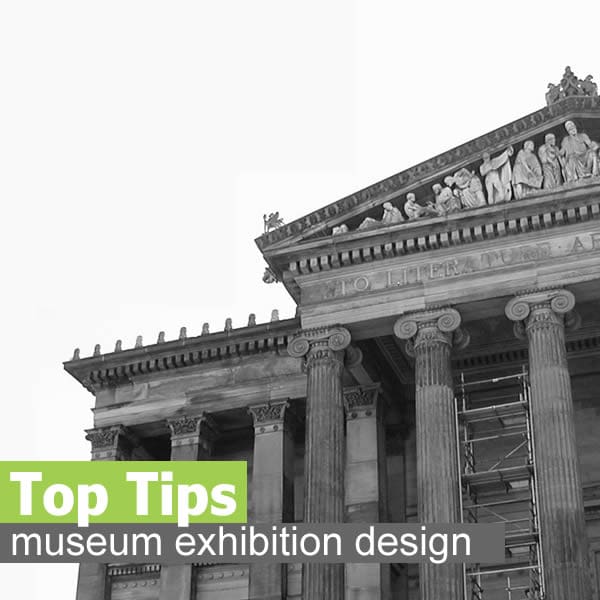

Twenty-three Tips on How to Design Great Museum Exhibits (Part 2)
Following on from Part 1: Top Tips to Produce Great Museum Exhibition Design, here is our list of Top Tips we didn’t get around to last time. Designing great museum exhibits is both an art and a science. A well-designed exhibition can educate, engage, and inspire visitors, while a poorly designed one can leave them bored or disconnected. Here are 23 tips for producing engaging and great museum exhibits:
- Shopping list: Create a shopping list of what you must offer the visitor and then prioritise its importance. This also helps you to know your target audience.
- Special factor: Ask yourself what’s going to make your museum exhibit different from all the others.
- Space available: Calculate the exhibit space you have available for each storyline or exhibit. This is especially important for travelling exhibitions, where the space and configuration of the environment will differ from venue to venue.
- Access: Provide DDA (Disability Discrimination Act) requirements for access to your building, galleries, museum exhibition spaces, facilities, and all exhibits.
- Design team: It is essential to have the right team working on the project. For example, curators, conservation, museum and lighting designers must collaborate if something special is to be created. Our creative design team is uniquely able to provide both museum professionals and lighting design.
- Conservation: What conservation issues do you need to consider for each exhibit?
- Flexibility: Build a level of flexibility for the future. Who knows how things might change?
- Low-tech inter-actives: Create a fun, pleasurable experience. Furthermore, it doesn’t break down as often as high-tech and, due to its low cost, allows more stations for people to interact simultaneously. For more, see the previous blog on low-tech vs. high-tech.
- High-tech interactives: One of the most expensive elements can be worth it if you have the budget. AI in museums is definitely on the rise, but it is undoubtedly not essential if you are on a low budget. You can explore 20 ways museums are using artificial intelligence (AI).
- Senses: It is noteworthy, where possible, to incorporate displays that pick up on the other three senses: sound, smell, and touch. These are especially useful when designing for those with impairments, allowing them to experience and enjoy your exhibitions.
- Content: Provide varying levels of information to appeal to different audiences and, in addition, school curriculum where possible.
- Bring to life: Nothing beats a personal tour with a curator. They inform you a little about each object as you pass by and flesh out stories. However, if that’s impossible, you should use other means to engage and immerse the visitor in the storylines. Subsequently, every exhibit should have a precise and captivating narrative that tells a story and guides the audience through the museum space.
- Eye candy: As mentioned in part one, the information should be appealing to the eye, drawing the visitor in to desire more. We go into this topic in further detail in our top 5 museum exhibition design tips.
- Curiosity factor: You can make the mundane look much more attractive if you handle the curiosity factor well. With this in mind, picture the launch of a new car when they show you a little corner detail before the big unveiling.
- Size: Vary the size of each gallery or space to imply. For example, intimacy and importance. This also helps the visitor break down the information provided.
- Languages: In a nutshell, which languages will you provide?
- Signage and path-finding: People should be able to navigate efficiently, so you must consider using colours and easy-to-remember symbols.
- Lighting: There cannot be enough importance placed on good lighting design; it can make or eradicate your whole project.
- Visitor flow: Do you want your visitors to be like mice in a maze? Should they follow your set pattern, or do you adopt the freedom-to-wander approach?
- Ambient Noise: Control unwanted ambient noise with the choice of accurate materials.
- Eco: Consider all the impacts your exhibition will have on the environment. How can you reduce these? For further environmentally friendly design tips, you can read our top sustainable design ideas.
- Maintenance: How will your exhibition stand up to the rigours of life?
- Security: Last but not least, an essential part of the museum exhibit design process.
